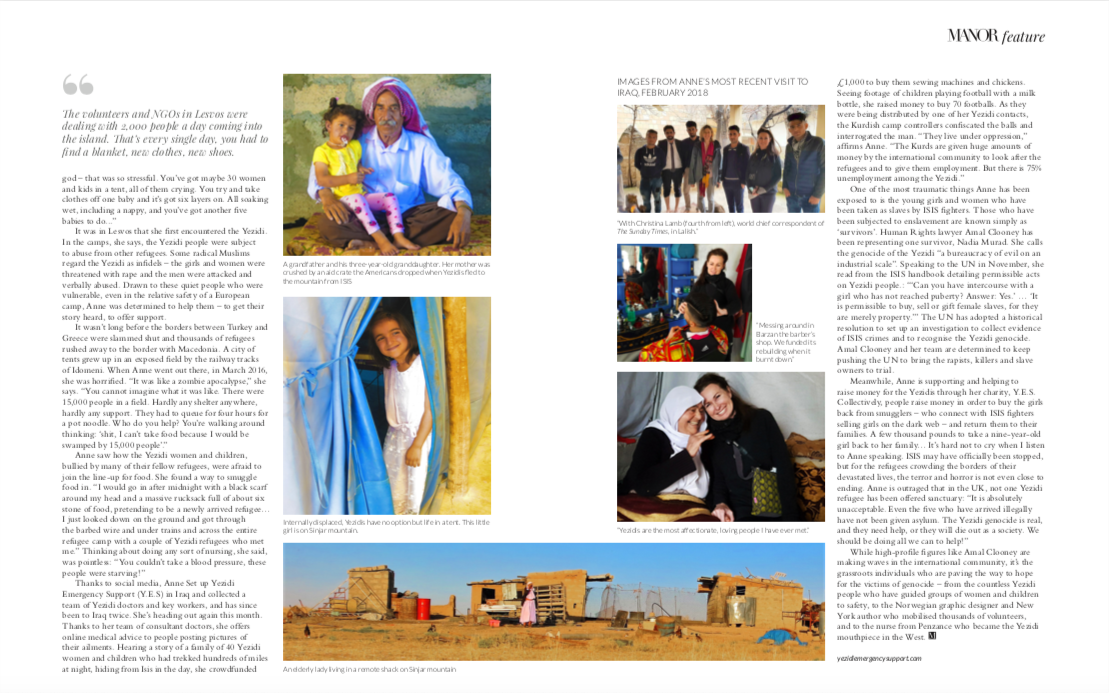Life-saver
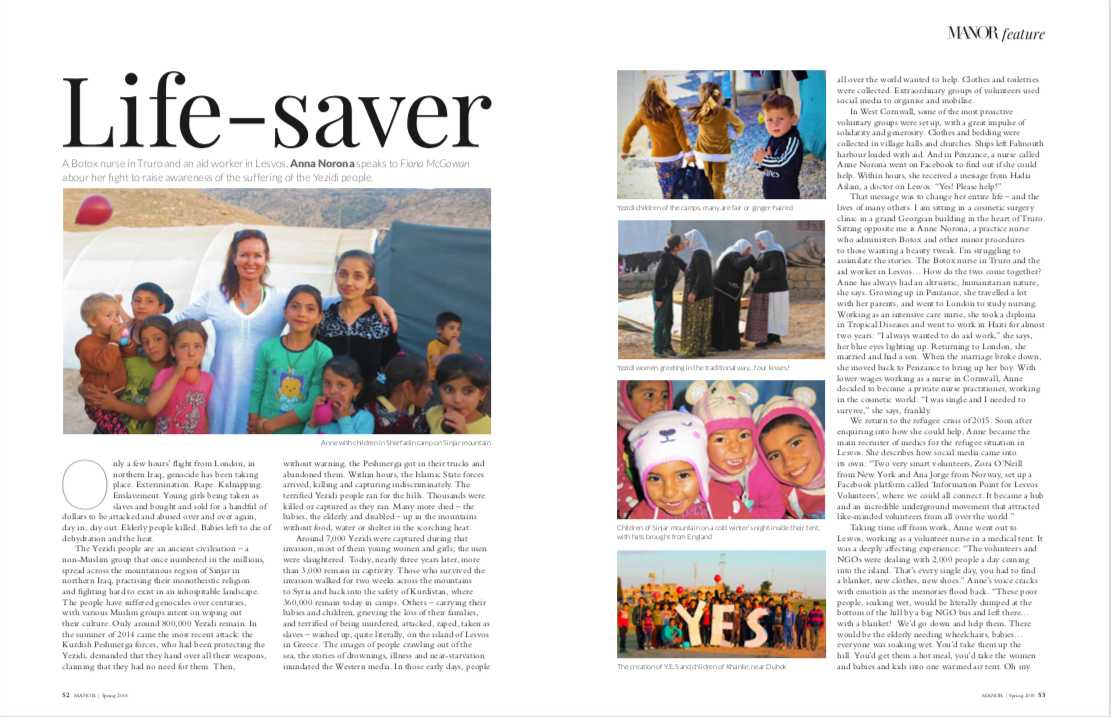
Only a few hours’ flight from London, in northern Iraq, genocide has been taking place. Extermination. Rape. Kidnapping. Enslavement. Young girls being taken as slaves and bought and sold for a handful of dollars to be attacked and abused over and over again, day in, day out. Elderly people killed. Babies left to die of dehydration and the heat.
The Yezidi people are an ancient civilisation – a non-Muslim group that once numbered in the millions, spread across the mountainous region of Sinjar in northern Iraq, practising their monotheistic religion and fighting hard to exist in an inhospitable landscape. The people have suffered genocides over centuries, with various Muslim groups intent on wiping out their culture. Only around 800,000 Yezidi remain. In the summer of 2014 came the most recent attack: the Kurdish Peshmerga forces, who had been protecting the Yezidi, demanded that they hand over all their weapons, claiming that they had no need for them. Then, without warning, the Peshmerga got in their trucks and abandoned them. Within hours, the Islamic State forces arrived, killing and capturing indiscriminately. The terrified Yezidi people ran for the hills. Thousands were killed or captured as they ran. Many more died – the babies, the elderly and disabled – up in the mountains without food, water or shelter in the scorching heat.
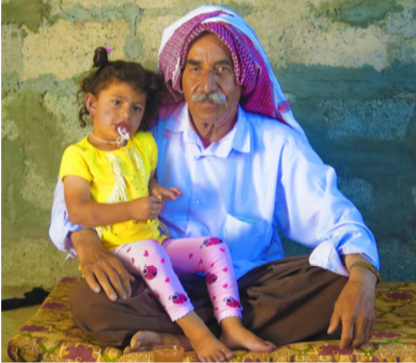
Around 7,000 Yezidi were captured during that invasion, most of them young women and girls; the men were slaughtered. Today, nearly three years later, more than 3,000 remain in captivity. Those who survived the invasion walked for two weeks across the mountains to Syria and back into the safety of Kurdistan, where 360,000 remain today in camps. Others – carrying their babies and children, grieving the loss of their families, and terrified of being murdered, attacked, raped, taken as slaves – washed up, quite literally, on the island of Lesvos in Greece. The images of people crawling out of the sea, the stories of drownings, illness and near-starvation inundated the Western media. In those early days, people all over the world wanted to help. Clothes and toiletries were collected. Extraordinary groups of volunteers used social media to organise and mobilise.
In West Cornwall, some of the most proactive voluntary groups were set up, with a great impulse of solidarity and generosity. Clothes and bedding were collected in village halls and churches. Ships left Falmouth harbour loaded with aid. And in Penzance, a nurse called Anne Norona went on Facebook to find out if she could help. Within hours, she received a message from Hadia Aslam, a doctor on Lesvos: “Yes! Please help!”
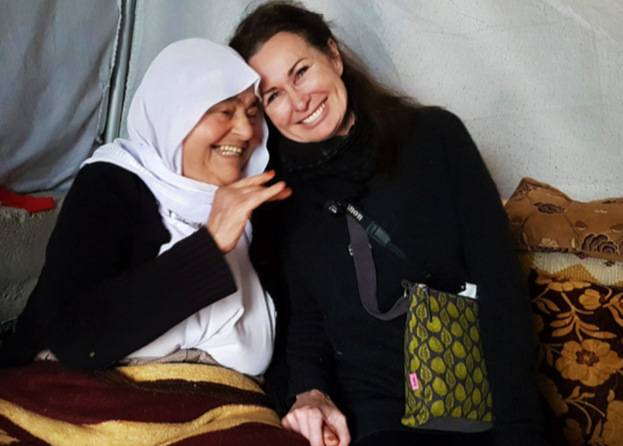
That message was to change her entire life – and the lives of many others. I am sitting in a cosmetic surgery clinic in a grand Georgian building in the heart of Truro. Sitting opposite me is Anne Norona, a practice nurse who administers Botox and other minor procedures to those wanting a beauty tweak. I’m struggling to assimilate the stories. The Botox nurse in Truro and the aid worker in Lesvos... How do the two come together? Anne has always had an altruistic, humanitarian nature, she says. Growing up in Penzance, she travelled a lot with her parents, and went to London to study nursing. Working as an intensive care nurse, she took a diploma in Tropical Diseases and went to work in Haiti for almost two years: “I always wanted to do aid work,” she says, her blue eyes lighting up. Returning to London, she married and had a son. When the marriage broke down, she moved back to Penzance to bring up her boy. With lower wages working as a nurse in Cornwall, Anne decided to become a private nurse practitioner, working in the cosmetic world: “I was single and I needed to survive,” she says, frankly.
We return to the refugee crisis of 2015. Soon after enquiring into how she could help, Anne became the main recruiter of medics for the refugee situation in Lesvos. She describes how social media came into its own: “Two very smart volunteers, Zora O’Neill from New York and Ana Jorge from Norway, set up a Facebook platform called ‘Information Point for Lesvos Volunteers’, where we could all connect. It became a hub and an incredible underground movement that attracted like-minded volunteers from all over the world.”
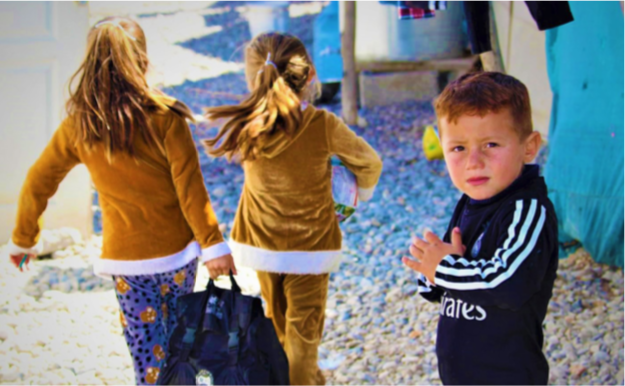
Taking time off from work, Anne went out to Lesvos, working as a volunteer nurse in a medical tent. It was a deeply affecting experience: “The volunteers and NGOs were dealing with 2,000 people a day coming into the island. That’s every single day, you had to find a blanket, new clothes, new shoes.” Anne’s voice cracks with emotion as the memories flood back. “These poor people, soaking wet, would be literally dumped at the bottom of the hill by a big NGO bus and left there... with a blanket! We’d go down and help them. There would be the elderly needing wheelchairs, babies... everyone was soaking wet. You’d take them up the hill. You’d get them a hot meal, you’d take the women and babies and kids into one warmed air tent. Oh my god – that was so stressful. You’ve got maybe 30 women and kids in a tent, all of them crying. You try and take clothes off one baby and it’s got six layers on. All soaking wet, including a nappy, and you’ve got another five babies to do...
It was in Lesvos that she first encountered the Yezidi. In the camps, she says, the Yezidi people were subject to abuse from other refugees. Some radical Muslims regard the Yezidi as infidels – the girls and women were threatened with rape and the men were attacked and verbally abused. Drawn to these quiet people who were vulnerable, even in the relative safety of a European camp, Anne was determined to help them – to get their story heard, to offer support.
It wasn’t long before the borders between Turkey and Greece were slammed shut and thousands of refugees rushed away to the border with Macedonia. A city of tents grew up in an exposed field by the railway tracks of Idomeni. When Anne went out there, in March 2016, she was horrified. “It was like a zombie apocalypse,” she says. “You cannot imagine what it was like. There were 15,000 people in a field. Hardly any shelter anywhere, hardly any support. They had to queue for four hours for a pot noodle. Who do you help? You’re walking around thinking: ‘shit, I can’t take food because I would be swamped by 15,000 people’.”

Anne saw how the Yezidi women and children, bullied by many of their fellow refugees, were afraid to join the line-up for food. She found a way to smuggle food in. “I would go in after midnight with a black scarf around my head and a massive rucksack full of about six stone of food, pretending to be a newly arrived refugee... I just looked down on the ground and got through the barbed wire and under trains and across the entire refugee camp with a couple of Yezidi refugees who met me.” Thinking about doing any sort of nursing, she said, was pointless: “You couldn’t take a blood pressure, these people were starving!”
Thanks to social media, Anne Set up Yezidi Emergency Support (Y.E.S) in Iraq and collected a team of Yezidi doctors and key workers, and has since been to Iraq twice. She’s heading out again this month. Thanks to her team of consultant doctors, she offers online medical advice to people posting pictures of their ailments. Hearing a story of a family of 40 Yezidi women and children who had trekked hundreds of miles at night, hiding from Isis in the day, she crowdfunded £1,000 to buy them sewing machines and chickens. Seeing footage of children playing football with a milk bottle, she raised money to buy 70 footballs. As they were being distributed by one of her Yezidi contacts, the Kurdish camp controllers confiscated the balls and interrogated the man. “They live under oppression,” affirms Anne. “The Kurds are given huge amounts of money by the international community to look after the refugees and to give them employment. But there is 75% unemployment among the Yezidi.”
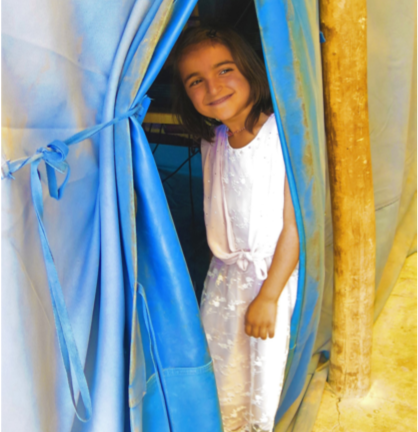
One of the most traumatic things Anne has been exposed to is the young girls and women who have been taken as slaves by ISIS fighters. Those who have been subjected to enslavement are known simply as ‘survivors’. Human Rights lawyer Amal Clooney has been representing one survivor, Nadia Murad. She calls the genocide of the Yezidi “a bureaucracy of evil on an industrial scale”. Speaking to the UN in November, she read from the ISIS handbook detailing permissible acts on Yezidi people.: “‘Can you have intercourse with a girl who has not reached puberty? Answer: Yes.’ ... ‘It is permissible to buy, sell or gift female slaves, for they are merely property.’” The UN has adopted a historical resolution to set up an investigation to collect evidence of ISIS crimes and to recognise the Yezidi genocide. Amal Clooney and her team are determined to keep pushing the UN to bring the rapists, killers and slave owners to trial.
Meanwhile, Anne is supporting and helping to raise money for the Yezidis through her charity, Y.E.S. Collectively, people raise money in order to buy the girls back from smugglers – who connect with ISIS fighters selling girls on the dark web – and return them to their families. A few thousand pounds to take a nine-year-old girl back to her family... It’s hard not to cry when I listen to Anne speaking. ISIS may have officially been stopped, but for the refugees crowding the borders of their devastated lives, the terror and horror is not even close to ending. Anne is outraged that in the UK, not one Yezidi refugee has been offered sanctuary: “It is absolutely unacceptable. Even the five who have arrived illegally have not been given asylum. The Yezidi genocide is real, and they need help, or they will die out as a society. We should be doing all we can to help!”
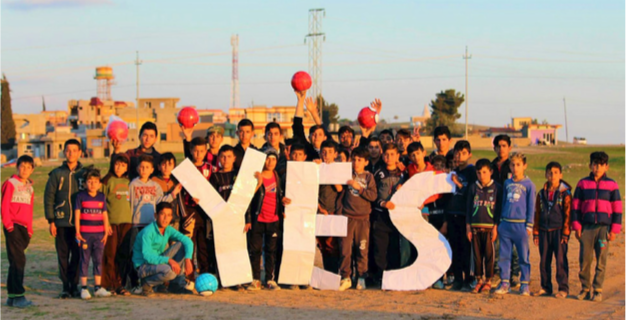
While high-profile figures like Amal Clooney are making waves in the international community, it’s the grassroots individuals who are paving the way to hope for the victims of genocide – from the countless Yezidi people who have guided groups of women and children to safety, to the Norwegian graphic designer and New York author who mobilised thousands of volunteers, and to the nurse from Penzance who became the Yezidi mouthpiece in the West.
yezidiemergencysupport.com
